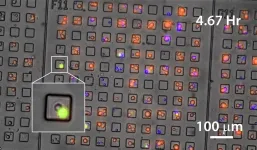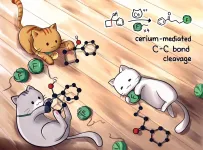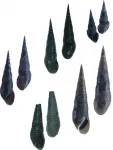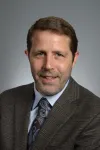Cancer: a new killer lymphocyte enters the ring
A team from SCCL has discovered that CD4 T lymphocytes, which usually play a supporting role in fighting cancer cells, also have the power to destroy them.
2021-02-26
(Press-News.org) Treatments for beating tumours are mainly based on CD8 T lymphocytes, which specialise in detecting and eliminating intracellular infections and in killing cancer cells. A large proportion of patients, however, do not respond to these treatments. This prompted a research team from the Swiss Cancer Centre Léman (SCCL, Switzerland) to bring together the universities of Geneva (UNIGE) and Lausanne (UNIL), the Ludwig Institute for Cancer Research (LICR), EPFL and CHUV to investigate CD4 T lymphocytes. While these play a supporting role with CD8 T cells, their ability to eliminate tumour cells directly has been a matter of controversy. Using innovative nanoimaging technologies designed at the EPFL laboratory, the scientists found that when the CD4 T lymphocytes were directly put in close contact to the cancer cells, up to a third of them could also kill them. This discovery, the subject of an article in Science Advances, is significant and broadens the therapeutic perspectives based on administering CD4 T lymphocytes to patients who are resistant to conventional therapies.
When cancer cells proliferate in our bodies, our immune system kicks in. The first line of fighters capable of destroying tumour cells are CD8 T lymphocytes known as cytotoxic T cells, backed up by CD4 T lymphocytes. The latter secrete factors that help the former in many ways. "That's why lots of cancer treatments are based on CD8 T lymphocytes," begins Camilla Jandus, last author of the study and a professor in the Department of Pathology and Immunology in UNIGE's Faculty of Medicine and adjunct scientist at LICR. "Unfortunately, some patients don't respond to these treatments, and so we have to find new ones."
The SCCL team turned their focus to CD4 T lymphocytes, which offer invaluable support to our immune system, as Pedro Romero, a professor in the Department of Fundamental Oncology in UNIL's Faculty of Medicine and Biology, explains: "These have a much wider spectrum of functional specialisations than CD8 T lymphocytes, and for a long time we didn't know for sure whether they had the capacity to differentiate into killer lymphocytes."
20,000 individual "boxing rings"
To address this question, the scientists examined CD4 T lymphocytes from around twenty patients with melanoma who were being treated at CHUV. "Although melanoma isn't the most common skin cancer, it is the deadliest, and it's particularly sensitive to immunotherapies," spells out Professor Jandus. The researchers isolated the CD4 T lymphocytes from both the blood and fragments of the tumours with the idea of comparing them directly. Dissociated tumour cells and CD4 T cells were co-incubated to observe their behaviour individually. Observation tools were then required to provide highly-advanced resolution down to the single cell level. "We created chips of over 20,000 mini-wells of 65 picolitres (1 picolitre = 10-12 litre) that can accommodate a CD4 T cell and a tumour cell in each of them, and function like boxing rings," says Hatice Altug, a professor in EPFL's Bionanophotonic Systems Laboratory. The researchers then photographed all these thousands wells simultaneously every five minutes for 24 hours in order to observe the interactions occurring between the two cells from a large set of pairs. "We know that it takes about two and a half hours for a CD8 to kill a tumour cell, and we decided to observe these boxing rings for 24 hours without knowing how, and if, the CD4s would react," continues Professor Altug.
A third of the CD4s emerged victorious
To the great satisfaction of the scientists, the high-throughput integration of dynamic imaging data showed that up to a third of the CD4 T lymphocytes succeeded in killing the tumour cell to which they were closely linked within five hours. As Professor Romero stresses: "These direct observations at the level of individual lymphocytes, which were revealed for the first time at such a level of sensitivity, definitively confirm the existence of CD4 T lymphocytes capable of killing tumour cells. And this happens while the tumour cells sometimes manage to divert them from their function of providing protective support to make allies of them."
By analysing the killer variety of CD4 T lymphocytes in detail, the scientists found that they expressed the SLAMF7 molecule, which promoted their tumor killer activity. "That's why we're now going to isolate and cultivate in vitro the best killer variety of CD4 T lymphocytes so we can turn them into a veritable army of trillions of cells, which we can then inject into patients on whom CD8-based treatments don't work," says Dr Jandus. The human body naturally has only a small number of CD4 T lymphocytes directed against tumours, and not enough to defeat them. "The ability to visualise this close combat with our picowell chip paves the way for expanding the arsenal in the fight against cancer, which we now need to develop," concludes Professor Altug.
INFORMATION:
[Attachments] See images for this press release:

ELSE PRESS RELEASES FROM THIS DATE:
2021-02-26
The ocean floor is vast and varied, making up more than 70% of the Earth's surface. Scientists have long used information from sediments at the bottom of the ocean -- layers of rock and microbial muck -- to reconstruct the conditions in oceans of the past.
These reconstructions are important for understanding how and when oxygen became available in Earth's atmosphere and ultimately increased to the levels that support life as we know it today.
Yet reconstructions that rely on signals from sedimentary rocks but ignore the impact of local sedimentary processes do so at their own peril, according to geoscientists including David Fike in Arts & Sciences at Washington University in St. Louis.
Their new study published Feb. ...
2021-02-26
Cells rely on membranes to protect themselves from the outside world. But these membranes can't be fully closed because nutrients and other molecules have to be able to pass through. To achieve this, cell membranes have many types of channels and pores. Also, there are receptors, antennas if you like, imbedded in the membrane that continuously monitor the outside world and signal to the cell interior. Extensive collaboration between five VIB groups resulted in a better understanding of the machinery that plants use to regulate the protein composition of their outer membrane. This discovery, published in Science Advances, enhances our basic knowledge of how the plasma membrane composition can be adapted based on external stimuli, an essential ...
2021-02-26
A team of international researchers went back to the formation of the solar system 4.6 billion years ago to gain new insights into the cosmic origin of the heaviest elements on the period-ic table.
Led by scientists who collaborate as part of the International Research Network for Nuclear Astrophysics (IReNA) (irenaweb.org) and the Joint Institute for Nuclear Astrophysics - Center for the Evolution of the Elements (JINA-CEE) (jinaweb.org), the study is published in the lat-est issue of the journal Science (science.sciencemag.org/content/371/6532/945).
Heavy elements we encounter in our everyday life, ...
2021-02-26
HOUSTON - (Feb. 26, 2021) - Save your silver! It's better used for jewelry than as a catalyst for drugs.
Rice University scientists have developed a greatly simplified method to make fluoroketones, precursors for drug design and manufacture that typically require a silver catalyst.
Rice chemist Julian West and graduate students Yen-Chu Lu and Helen Jordan introduced a process for the rapid and scalable synthesis of fluoroketones that have until now been challenging and expensive to make.
Their open-access work graces the cover of the Feb. 21 issue of the Royal Society of ...
2021-02-26
Dropping out of high school, having schizophrenia, or being diagnosed with a co-occurring personality disorder increases the likelihood of someone becoming a "high utilizer" of inpatient psychiatric hospital services, according to a new study by researchers at The University of Texas Health Science Center at Houston (UTHealth). A high utilizer is someone who has been admitted three or more times within one year.
The research was published today in The Journal of Health Care for the Poor and Underserved.
For their findings, researchers used machine learning to analyze deidentified electronic ...
2021-02-26
MISSOULA - University of Montana researchers and their partners have discovered a slimy strategy used by bacteria to defeat antibiotics and other drugs used to combat infections afflicting people with cystic fibrosis. The research was published Feb. 23 in the journal Cell Reports.
Cystic fibrosis is a life-threatening disease that causes persistent lung infections and limits a person's ability to breathe over time. A common strain of bacteria, Pseudomonas aeruginosa, often thrives in the lungs of people with cystic fibrosis, as well as in wounds from burns or diabetic ulcers. Once a P. aeruginosa infection is established, ...
2021-02-26
Robots that could take on basic healthcare tasks to support the work of doctors and nurses may be the way of the future. Who knows, maybe a medical robot can prescribe your medicine someday? That's the idea behind 3D structural-sensing robots being developed and tested at Simon Fraser University by Woo Soo Kim, associate professor in the School of Mechatronic Systems Engineering.
"The recent pandemic demonstrates the need to minimize human-to-human interaction between healthcare workers and patients," says Kim, who authored two recent papers on the subject - a perspective on the technology and a demonstration of a robots' usefulness in healthcare. "There's an opportunity for sensing robots to measure ...
2021-02-26
Parasitic flatworms known as agents of food-borne zoonoses were confirmed to use several species of thiarid snails, commonly found in freshwater and brackish environments in southeast Asia, as their first intermediate host. These parasites can cause severe ocular infections in humans who consume raw or improperly cooked fish that have fed on infected snails. The study, conducted in South Thailand by Thai and German researchers and led by Kitja Apiraksena, Silpakorn University, is published in the peer-reviewed open-access journal Zoosystematics and Evolution.
"Trematode infections are major public health problems affecting humans in southeast Asia," explain the scientists. "Trematode infections depend not only on the habit of people, but also on the presence of first ...
2021-02-26
BOSTON - Two novel calculators for predicting which patients admitted to the hospital with COVID-19 are at greatest risk of requiring mechanical ventilation or of in-hospital death have been developed and validated by Massachusetts General Hospital (MGH). In a study published in The Lancet's EClinicalMedicine, researchers describe how these models could enable clinicians to better stratify risk in COVID-infected patients to optimize care and resource utilization in hospitals faced with ICU capacity constraints.
"Information that can accurately predict severity of the clinical course at the time of hospital admission has been limited," says senior author Rajeev Malhotra, MD, a cardiologist at MGH and investigator in the MGH Cardiovascular Research Center. ...
2021-02-26
COLUMBIA, Mo. -- When Patrick Rottinghaus began college, he had no idea what he wanted to do with his career. He started out as an "Open" major while he explored possibilities.
Today, Rottinghaus, an associate professor in the University of Missouri College of Education, is helping young people eager to find their place in the world by identifying their strengths and connecting them with careers that match their skillset, interests and personality. As the father of three children, including a daughter soon to enter high school, he wants to ensure they are equipped ...
LAST 30 PRESS RELEASES:
[Press-News.org] Cancer: a new killer lymphocyte enters the ring
A team from SCCL has discovered that CD4 T lymphocytes, which usually play a supporting role in fighting cancer cells, also have the power to destroy them.







